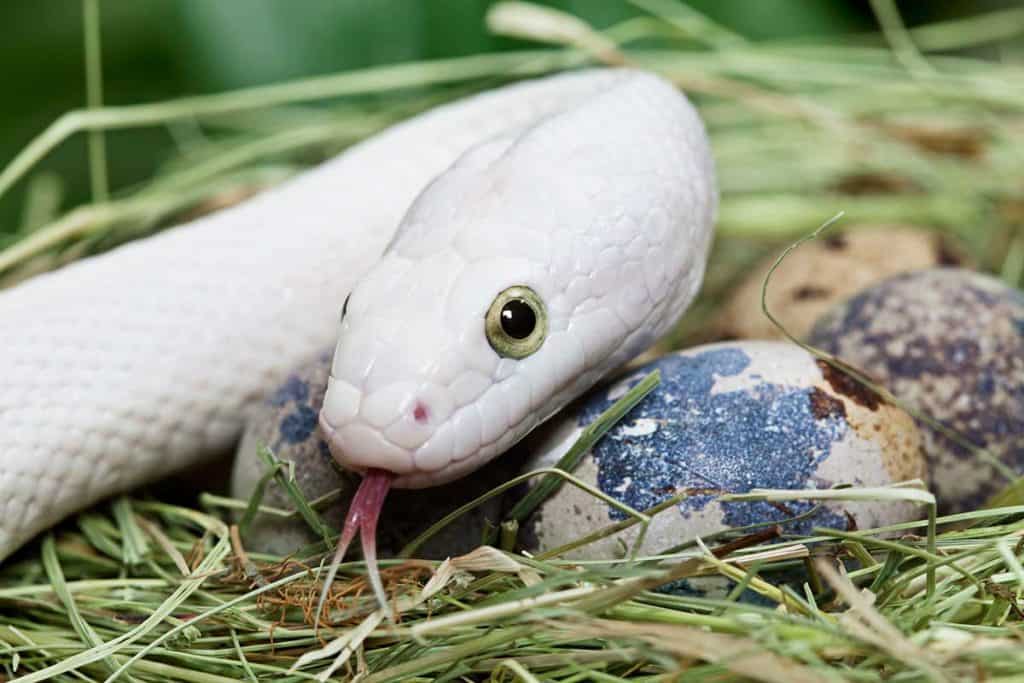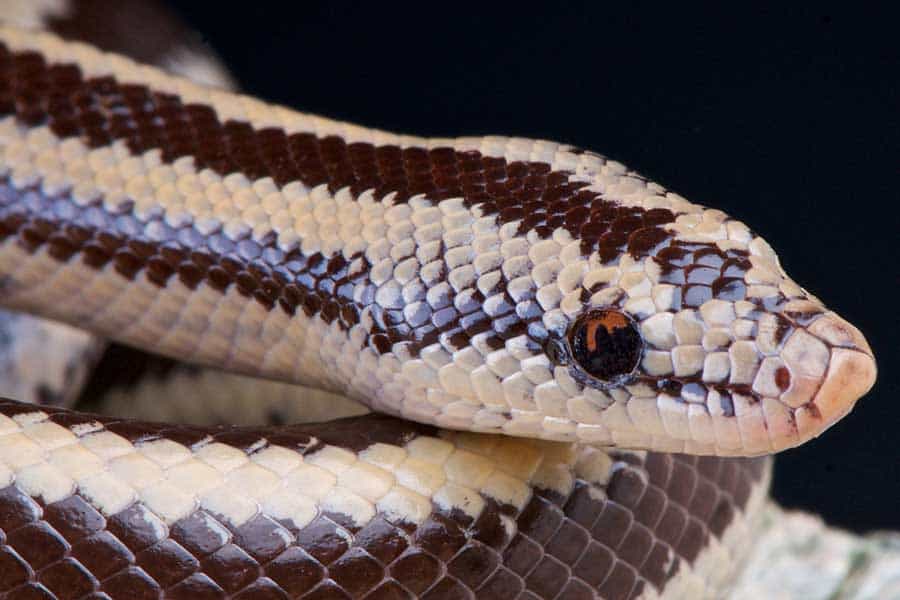If you’re a curious one who’s wondering where baby snakes come from, you’ve come to the right place. Yes, folks, today we’ll learn how snakes reproduce.
How is it that snakes can produce so many offspring in one go? And given their anatomy, how do they even mate? These are all great questions and we’ll get to them right here, right now.
How Do Snakes Reproduce?
Viviparous
Viviparity means a snake develops, grows, and gives birth to live young without the use of a shell. There are very few snakes that are viviparous. These are the boa constrictors and anacondas.
This means if you see a clutch of very large eggs in a pet shop, for example, they definitely don’t belong to boas or anacondas!
Oviparous
Oviparity means the snake develops the egg inside its body and lays it. The offspring inside the egg then continues to develop for some time outside of the mother’s body.
This is the case with most snakes, including popular species like the corn snake and the gopher snake.
Ovoviviparous
Ovoviviparity means the snake develops its eggs inside their body and then keeps them inside their body for a certain period of time. Once the offspring are fully mature inside the eggs, they split open, and the mother gives birth to live snakes. The mother will then expel the broken egg shells as well.
This is the case with many venomous snakes.
Snake Mating Season
The timing of snake mating, especially in the wild, is more complex than you might initially believe. This is because snakes, like most reptile species, are cold-blooded. They can’t produce their own body heat, so they rely on the external environment to regulate their temperature and metabolism.
Because of this, many snakes go into a state of brumation or hibernation during the winter season when the weather is cold. This is an almost sleep-like state that allows them to slow their metabolism and conserve resources.
When they emerge from hibernation around the start of the spring season, mating season begins. By waiting until the cold months have passed, the mother snake will be able to keep her eggs warm so they have a better chance of surviving.
How Breeding Works
When a female is ready to mate during the mating season, she will release something called pheromones as she travels. Nearby males will pick up this scent and follow it until it leads them to her.
Once they meet up, how do they actually mate?
Both male and female snakes have something called cloacas for waste purposes. Interestingly, a female snake’s cloaca is also her reproductive organ. Male snakes have two reproductive organs called hemipenes inside their tail.
The male snake will align his body with the female’s, and if she decides she is willing to mate, she will lift her tail so he can wrap around her. This prevents her from moving away and keeps the process going smoothly.
After a female has accepted a male’s invitation to mate, he will insert one of his hemipenes into her cloaca. After that, the process can take a long time; usually around an hour, but sometimes lasting up to a full day!
During this time, the sperm will travel to the female snake’s cloaca and fertilize her eggs. When the process is complete, the male will produce what’s known as a mating plug, which prevents any other nearby snakes in the area from mating with her.
What to Consider Before Breeding Snakes
Just because you know the answer to the question, “How do snakes breed?” doesn’t mean you should breed yours.
Irresponsible breeders are one of the biggest reasons why so many common reptiles end up unwanted and in rescues. Just because you can doesn’t mean that you should breed your pet snakes, and many people underestimate just how much work and responsibility it is.
Before even thinking about breeding your pets, you should have a thorough understanding of their genetic history and be able to read their behavior.
Not only that, but you also need to consider if you have the time to care for all the babies. Keep in mind that snakes can potentially lay up to 100 or more eggs. Do you have the space and money to properly house that many snakes? Will you be able to find homes for them all?
Breeding is a huge financial responsibility and not one that should be undertaken lightly. As a general rule, you should have thorough experience with the species beforehand rather than trying to breed your snakes on an impulse.
FAQs on the Snake Mating
Are snakes sexual or asexual?
The majority of snakes reproduce sexually by mating with each other. This is true for both captive-bred and wild snakes; however, there have been a few documented cases of snakes reproducing asexually through a process called parthenogenesis. Essentially, this is a process in which the female self-fertilizes and clones her own DNA. This phenomenon is rarely documented and not believed to be a common occurrence.
Additionally, it should be noted that female snakes have the ability to hold male sperm inside their bodies long after a mating session. They can store sperm for a few days or even up to a year. In fact, some studies have suggested they can hold it for up to six years! If a female suddenly gets pregnant seemingly out of nowhere, then, that could be the explanation behind it instead of asexual reproduction.
How many babies does a snake have?
Egg-laying snakes are designed to lay as many eggs as possible. In the wild, where there are diseases, predators, and other threats, this helps ensure that at least some of the offspring will survive and grow to adulthood.
With that being said, a snake could lay as few as three or as many as 100 eggs in a single clutch! Some even lay more than that, and the number varies slightly for each species.
Did you know that some snakes are live-bearers, meaning they give birth to live young instead of laying eggs? You read that right! The majority of snakes are egg-layers, but live-bearing snakes do exist. Live-bearers typically have between 10 and 30 babies at once.
Can snakes mate with other species of snakes?
All snake species have slightly differently shaped reproductive organs. This prevents two species of snake from interbreeding easily, but it doesn’t mean it’s impossible for them to mate and even reproduce together.
Not only is cross-breeding snakes possible, but other than the shape of their bodies it’s actually relatively easy and becoming more common. Typically, the results are best when the two species are closely related. It’s also not recommended for anyone who isn’t experienced to attempt to breed or cross-breed snakes.
An interesting fact about cross-bred snakes is that the offspring are usually fertile, unlike most other hybrid animals.
What is the difference between a male and female snake?
Male snakes have a pair of tube-shaped organs called hemipenes located inside the snake’s tail. These are essentially the equivalent of two small penises.
Both male and female snakes have a cloaca for waste purposes, but a female’s is also used for reproduction purposes. Female snakes do not have hemipenes. That’s the main difference between a male and female snake, but how do you tell them apart?
Since the male’s hemipenes are located inside the body, it can be difficult to tell; however, males will typically have a longer and thicker tail due to the reproductive organs sitting inside their bodies. Because females don’t have hemipenes, their tails can be smaller.
If you’re having difficulty figuring it out, you can have your snake sexed when you take him or her to the vet.
Do snakes give birth through their mouths?
There is a common misconception floating around that snakes give birth through their mouths. This is not at all true.
It is true, though, that not all snakes give birth in the same way. The majority of snakes lay eggs, but around 20 or 30% are live-bearers, meaning they produce live newborn offspring, similar to the way mammals give birth.
Do snakes mate for life?
Snakes are not naturally monogamous and do not mate for life. It’s not unheard of for the same pair of snakes to come across each other and mate again in the next mating season; however, this is pretty uncommon in the wild.
Males will not intentionally seek out the same female to mate with her again. Unlike humans, snakes don’t have the ability to process deep emotions like love and have no concept of loyalty.
Though you may find it ideal to pursue one partner, snakes do not have that same train of thought. Their primary goal is to produce as many offspring and pass on their DNA as much as possible.
A Final Word on How Snakes Reproduce
Snakes are amazing animals with distinctive anatomy, so it’s no wonder that there are so many questions about their mating process and how they reproduce.
If you’re thinking about breeding your snakes, however, be sure to do your research and be prepared for the huge responsibility that it is. Many people jump into reptile breeding without giving it too much thought; don’t make that mistake!
Now that you understand how snakes procreate, you can appreciate the beauty of your pet even more!




